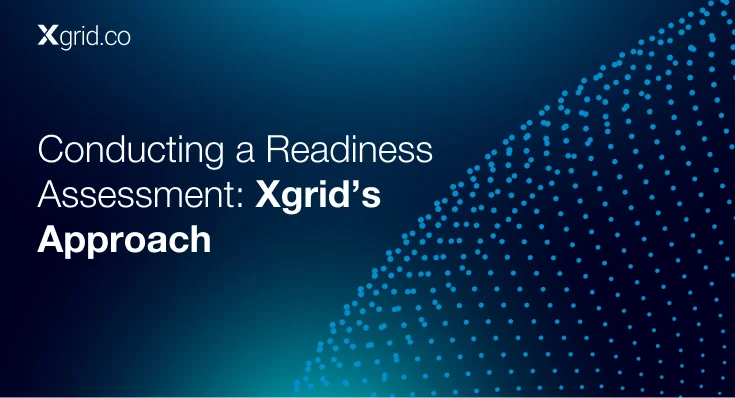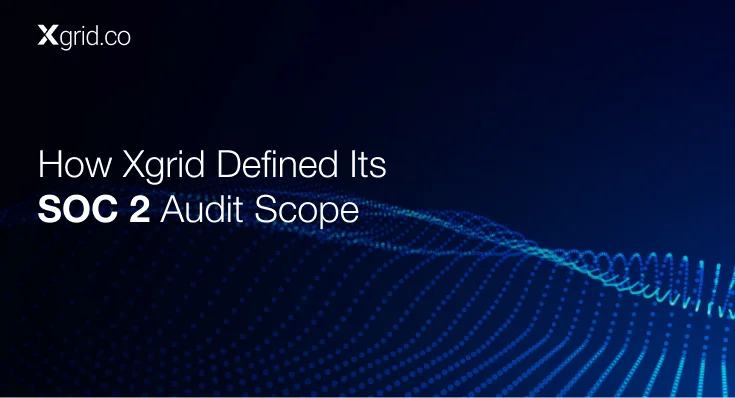Introduction to SOC 2 Compliance: Why It Matters for Xgrid
SOC 2 compliance is one of the most effective ways to ensure that your organization is protecting its data and maintaining the trust of your clients.
But what exactly is SOC 2 compliance, and why does it matter for Xgrid? In this blog, we’ll dive into the essentials of SOC 2 compliance, exploring its significance, the benefits it offers, and why it should be a priority for your organization.
SOC 2 compliance should be a priority for cloud-focused organizations as it ensures robust security, availability, and data integrity practices, building trust with clients and stakeholders.
It demonstrates a commitment to protecting sensitive data, which is crucial for attracting and retaining customers in today’s privacy-conscious environment. SOC 2 also provides a competitive edge, as many enterprise clients require vendors to meet these standards.
The framework promotes continuous monitoring and improvement of security controls, reducing the risk of breaches. Additionally, it streamlines vendor assessments, making partnerships and contracts easier to manage.
Ultimately, SOC 2 compliance fosters transparency and operational excellence, which are vital for scaling securely in the cloud.
SOC 2 (Service Organization Control 2) is a widely recognized auditing standard developed by the American Institute of Certified Public Accountants (AICPA).
Unlike other security frameworks, SOC 2 is specifically designed for service providers that store customer data in the cloud. It focuses on five key “Trust Service Criteria” that are critical for any organization managing sensitive information:
- Security: Protecting data against unauthorized access.
- Availability: Ensuring systems are reliable and available for operation and use.
- Processing Integrity: Guaranteeing that system processing is complete, valid, and accurate.
- Confidentiality: Protecting sensitive information from unauthorized disclosure.
- Privacy: Managing and protecting personal information in accordance with privacy laws and regulations.
SOC 2 compliance is not just a one-time certification but an ongoing commitment to maintaining and improving security protocols within your organization.
Why SOC 2 Compliance is Crucial
For a company like Xgrid, which likely deals with dynamic customers, SOC 2 compliance is more than just a checkbox exercise. It’s a critical component of your overall business strategy. Here’s why:
1.Building Trust with Clients
Trust is the cornerstone of any business relationship. Clients need to know that their data is safe with you. Achieving SOC 2 compliance demonstrates that Xgrid is committed to protecting customer data and upholding the highest security standards. This compliance can be a significant competitive advantage, especially when dealing with clients who are increasingly concerned about data privacy and security.
2. Meeting Regulatory Requirements
With data protection regulations becoming stricter worldwide, SOC 2 compliance can help Xgrid stay ahead of the curve. Whether it’s GDPR in Europe or CCPA in California, many regulatory frameworks require companies to have robust data protection measures in place. SOC 2 provides a clear framework that can help you meet these requirements, reducing the risk of non-compliance penalties.
3. Reducing the Risk of Data Breaches
Data breaches can be catastrophic for any organization, leading to financial losses, legal challenges, and reputational damage. SOC 2 compliance helps Xgrid identify and address vulnerabilities in its systems before they can be exploited. By implementing the Trust Service Criteria, you are actively working to prevent data breaches, ensuring that your clients’ information remains secure.
4. Improving Operational Efficiency
SOC 2 compliance isn’t just about security; it’s also about improving your organization’s overall efficiency. The process of becoming SOC 2 compliant involves a thorough review of your existing systems and processes. This review often uncovers inefficiencies and areas for improvement, leading to streamlined operations and better performance across the board.
The SOC 2 Compliance Journey: What to Expect
Embarking on the SOC 2 compliance journey can seem daunting, but it’s a manageable process with the right approach. Here’s a high-level overview of what you can expect:
1. Scoping and Readiness Assessment
The first step in the SOC 2 compliance journey is defining the scope of the audit. This involves identifying which systems, processes, and services will be covered. A readiness assessment is then conducted to evaluate your current security posture and identify any gaps that need to be addressed before the audit.
2. Implementing Controls
Based on the results of the readiness assessment, Xgrid will need to implement the necessary controls to meet the SOC 2 Trust Service Criteria. This could involve updating policies, improving access controls, enhancing data encryption, and more. It’s important to document all processes and controls thoroughly, as this documentation will be reviewed during the audit.
3. Conducting the Audit
Once the controls are in place, it’s time to conduct the SOC 2 audit. An independent auditor will review your systems, processes, and documentation to ensure they meet the SOC 2 standards. The audit can take several weeks or months, depending on the complexity of your organization.
4. Maintaining Compliance
SOC 2 compliance is an ongoing process. After the audit, Xgrid will need to continuously monitor and improve its security practices to maintain compliance. Regular internal audits and updates to controls will help ensure that your organization remains compliant and ready for future audits.
The Benefits of SOC 2 Compliance for Xgrid
Achieving SOC 2 compliance offers numerous benefits for Xgrid, beyond just meeting regulatory requirements. Here are some of the key advantages:
1. Enhanced Reputation
In today’s competitive market, having SOC 2 compliance can set Xgrid apart from competitors. It’s a clear indicator that your company takes data security seriously, which can enhance your reputation and attract more clients.
2. Increased Business Opportunities
Many clients, particularly in industries like finance and healthcare, require their vendors to be SOC 2 compliant. By achieving this certification, Xgrid can unlock new business opportunities and expand its client base.
3. Stronger Security Posture
SOC 2 compliance forces you to take a hard look at your security practices and make necessary improvements. This leads to a stronger security posture overall, reducing the risk of breaches and other security incidents.
4. Peace of Mind
Knowing that your organization is SOC 2 compliant provides peace of mind, both for you and your clients. It ensures that you have the right controls in place to protect sensitive data and respond effectively to potential threats.
SOC 2 compliance is not just a regulatory requirement; it’s a strategic investment in the future of Xgrid. By achieving SOC 2 compliance, Xgrid can build trust with clients, reduce the risk of data breaches, and unlock new business opportunities.
The journey to compliance may be challenging, but the benefits far outweigh the effort. For Xgrid, SOC 2 compliance is not just about meeting standards—it’s about setting the standard for data security in the industry.

Established in 2012, Xgrid has a history of delivering a wide range of intelligent and secure cloud infrastructure, user interface and user experience solutions. Our strength lies in our team and its ability to deliver end-to-end solutions using cutting edge technologies.
OFFICE ADDRESS
US Address:
Plug and Play Tech Center, 440 N Wolfe Rd, Sunnyvale, CA 94085
Dubai Address:
Dubai Silicon Oasis, DDP, Building A1, Dubai, United Arab Emirates
Pakistan Address:
Xgrid Solutions (Private) Limited, Bldg 96, GCC-11, Civic Center, Gulberg Greens, Islamabad
Xgrid Solutions (Pvt) Ltd, Daftarkhwan (One), Building #254/1, Sector G, Phase 5, DHA, Lahore




